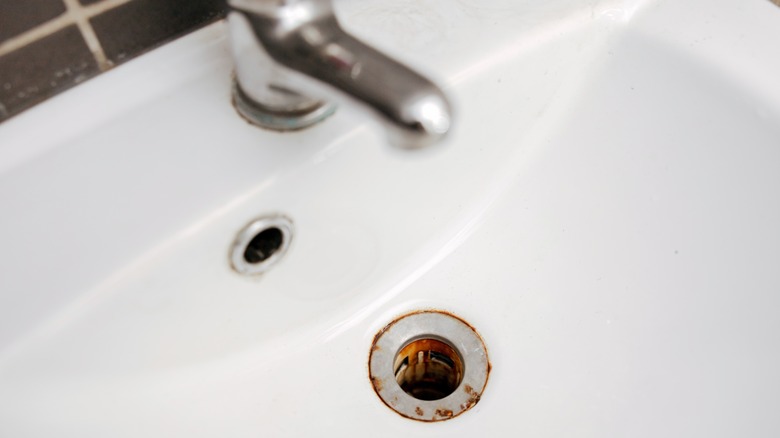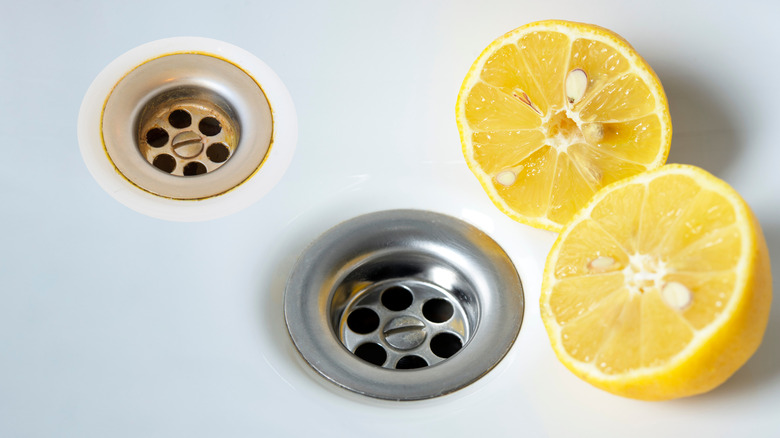The Best Method For Removing Rust Stains From Your Porcelain Sink
Nothing ruins the appearance of a porcelain sink faster than rust. Even if your sink is clean, those unsightly reddish-brown stains can make it appear dirty and poorly maintained. Further, if rust stains are not dealt with properly, they can become worse and more difficult to remove over time. Traditional cleaning products contain harsh chemicals that can scratch delicate surfaces like porcelain. Thankfully, you can use common kitchen ingredients to tackle rust stains naturally. Of these methods, lemon and salt is the most effective combination. Acidic substances, such as lemon juice, break down iron oxide, the chemical reaction that causes rust. Sodium chloride also aids this process; the coarse particles help lift stubborn stains, making salt a secret ingredient you can use to clean up rust.
Citric acid and sodium chloride are an eco-friendly solution that is safe to use on porcelain, unlike abrasive cleaners and bleach, which could scratch the enamel. This method is preferred by some professional cleaning services as an effective non-toxic alternative to store-bought rust remover. However, even natural ingredients can damage porcelain surfaces if used incorrectly. Let's go over the steps of using lemon and salt to remove unsightly rust from your sink and the steps you can take to prevent it in the future.
How to use lemon juice and salt to remove rust from porcelain
The most effective way to remove stains from porcelain sinks with lemon juice and salt is to combine the two ingredients to form a thick paste. The key is to allow the paste to absorb for long enough to dissolve the rust. Coat the rust stains generously with the paste and allow the solution to set for at least 15 minutes. If the stains are significant, you can leave the paste for several hours or even overnight. However, if your sink is new or generally well-maintained, the acidity may damage the porcelain enamel if left to sit for too long.
Once the paste has been absorbed for long enough, scrub the rust stains with a sponge or toothbrush. To prevent scratches, apply gentle pressure and avoid using abrasive scrubbing tools, such as scouring pads or steel wool. Rinse the solution thoroughly with clean water and repeat the process as necessary to remove all traces of rust from your sink.
There are preventative steps you can take to prevent these unsightly stains from returning again. The moisture in your bathroom can cause rust to accumulate quickly if you're not careful. Keep metal objects away from your porcelain sink, including razors and aluminum aerosol cans, which can leave stains on your pristine porcelain surfaces. Make it a habit to dry your sink after using it to prevent stains from hard water buildup and rust particles.

